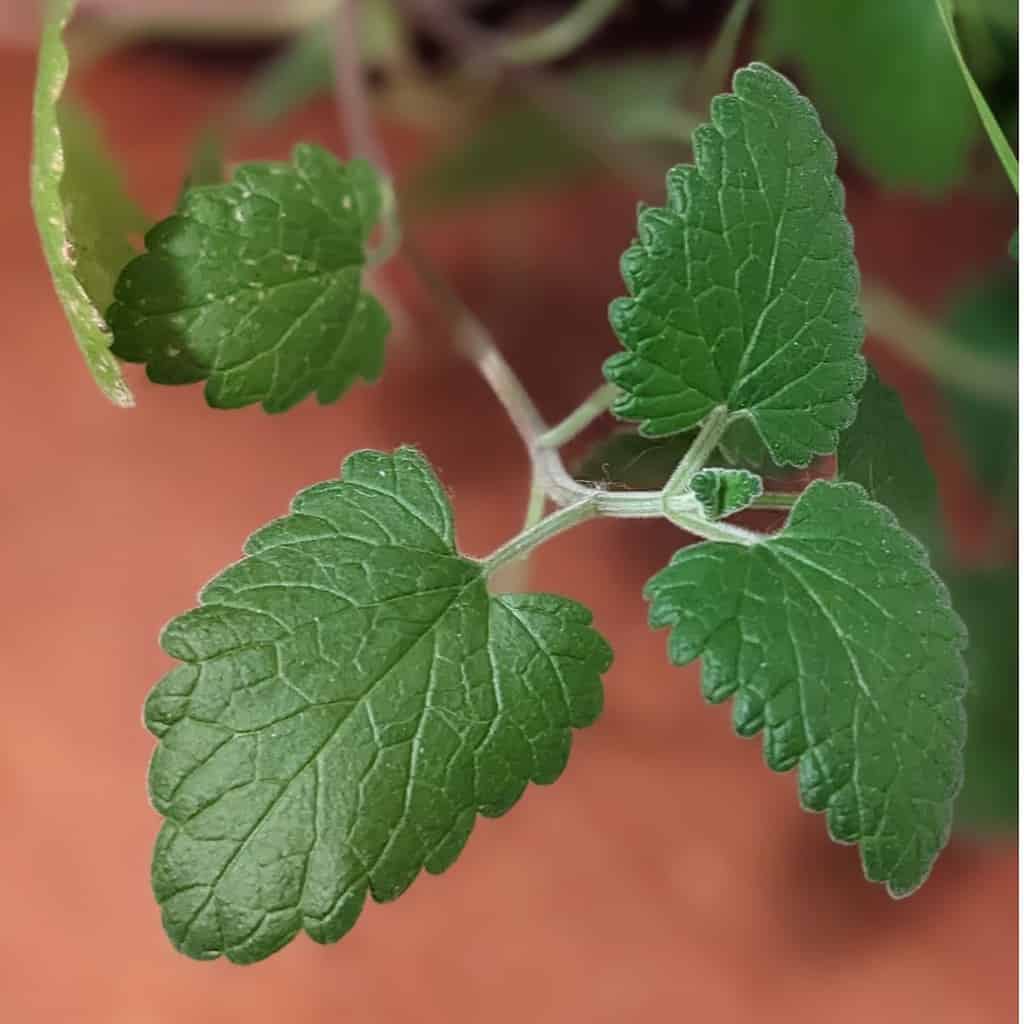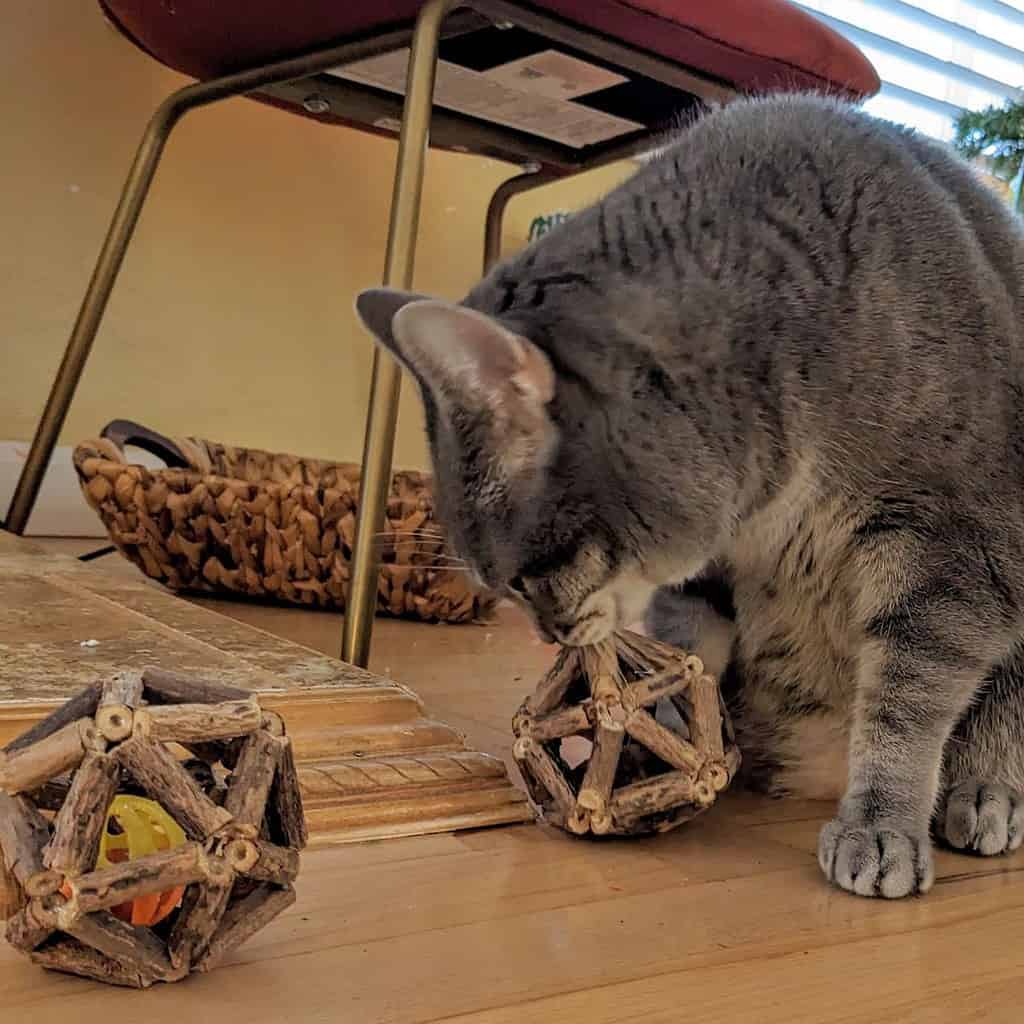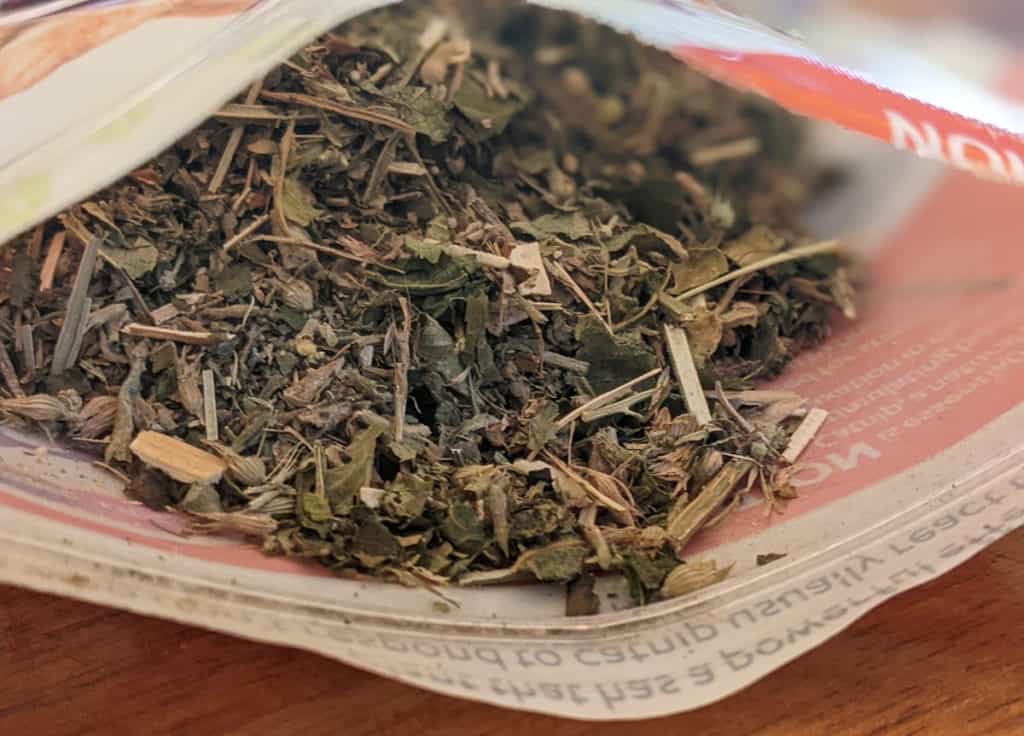The word catnip probably conjures up images of cats rolling around, kicking, and rubbing all over the catnip leaves and stems. But, what is catnip? And why do some cats respond to it and others don’t?
What Is Catnip?
Catnip (Nepeta cataria) is a herb that grows in the wild or can be cultivated. Catnip is member of the mint family and is also known as catswort, catwort, and catmint.
Catnip grows widely in Asia, Europe, and North America. Catnip is native to southern and eastern Europe, the Middle East, Central Asia, and parts of China and has been naturalized in northern Europe, New Zealand, and North America.
Catnip is a perennial herbaceous plant that flowers in late spring to fall.

What does catnip do to cats?
When some cats smell or eat catnip, they can often exhibits behaviors commonly associated with female cats in heat, regardless of the cat’s age, gender, or neutered status.
For a cat, that feeling can be achieved just by smelling something as simple as catnip. It turns out that it’s a particular chemical in the plant called nepetalactone. When certain cats get a whiff of this, it triggers pheromones, which are chemicals that cause all kinds of “feel good” reactions that last roughly 10 minutes.

When cats smell catnip, nepetalactone stimulates sensory neurons that trigger a variety of responses, usually starting with the cat sniffing, licking, and chewing the plant with apparent delight. These neurons then send messages to the olfactory bulb for further processing and then deliver the information to the hypothalamus or amygdala.
The cat may also start to rub their head and body on the catnip, jump, roll around, vocalize, and salivate. This reaction is followed by a short period, usually around 10-15 minutes, of apparent euphoria that often includes purring, leaping, and hyperactivity.
Nepetalactone just acts like pheromones that’s why cats behave like they are in heat.
What percentage of cats respond to catnip?
A survey co-sponsored by scientific literature found that approximately 50-70 percent of cats responded positively to their experience with catnip.

Sensitivity to catnip is hereditary, and it’s estimated that about one third of cats lack this gene. Additionally, kittens less than 8 weeks old, whether they carry the gene or not, usually show no response to catnip.
What is the typical repsonse to catnip?
Cats showing the characteristic catnip response (sniffing, licking, shaking their head, rubbing (chin/cheek) and rolling on their back, sometimes accompanied by drooling and raking their claws across the catnip.
Some cats like to eat the catnip.
Six Phases of Catnip Enjoyment
Researchers have documented six phases of a cat’s reaction to catnip. These phases are:
- Sniffing of the catnip
- Rubbing on and licking the catnip
- Rolling on to the catnip and increased licking
- Increased rolling and animated play or movement
- Sudden and urgent grooming
- Abrupt ending of the cat’s interaction with the catnip (usually after about 10-15 minutes)
Why Doesn’t Some Cats Don’t Like Catnip?
All cats do not receive the same effect of catnip. Some of them may respond differently to it. To ensure that you’re knowledgeable about these idiosyncrasies, here are some of the reasons why your cat may not seem interested in your offering of catnip:
Genetics
The sensitivity to catnip in cats is hereditary, meaning it’s controlled by genetics. Approximately 70-80% of cats are affected by catnip, indicating they have inherited a sensitivity to the plant. This sensitivity is related to a gene which, if present, makes the cat responsive to the active compound in catnip, nepetalactone.
The remaining one third of cats feel completely indifferent to catnip due to their genetic makeup.
Overexposure
Humans become immune to fragrance over time. The same is true for cats and catnip as well. Generally, a cat will become used to the smell of catnip after about 15 minutes or a little bit longer if they are highly involved in playing with whatever toy has been dusted with it.

However, your cat will most likely come back to the site of your application within another hour or so as their olfactory senses become highly focused once again which allows them to smell just tiny amounts of the chemical compound present on their toy.
If your cat seems uninterested in a catnip toy after reacting to it at first, consider whether she has grown tired of playing with it. Are you leaving that toy around for your cat all the time? If so, try taking the toy away when not in use and bringing it out about once a week. Your cat will likely begin to enjoy the toy again after some time has passed since its last use.
Age
Age is another factor that plays an important role in the effect of catnip on cats. Kittens that are below the age of 3 months have yet not developed the olfactory receptors so at this point they will not be affected by catnip.
When cats are around the age of 6 months old you can try introducing them to catnip again to see if it does affect them; once you’re sure it’s safe for them just feed it to them as an occasional treat.
Catnip for Cats
Catnip is sold both as a fresh product grown in a small container and in bags containing crushed pieces of the dried plant. Both can be offered to cats.
The benefit of dried catnip is that it can be stored for a longer period of time.

How To Give Catnip To Your Cat?
Cats love to play and a lot of pet owners think that catnip makes their pet better at it. Catnip comes in a lot of products that can easily be bought everywhere, including online. When you first give your cats some catnip, they can happily enjoy this lovely herbal treat by either letting them lick or eat it, or you can even feed the herb to your pets through toys.
However, if you feel like using catnip for training then we suggest that you gently rub your hands with the plant so that its scent can be transferred after which you reward the behavior you want from your feline friend.
If you sprinkle some catnip around their favorite posts, beds, and toys the chances are, they will use them all the more happily! If you do this a few times and keep on encouraging your cat with the sprinkled catnip then there is a chance she might grow to love these objects even more than usual.
Offer catnip to your cat in moderation
while catnip can provide a safe and fun form of enrichment for many cats, excessive consumption can lead to mild gastrointestinal upset. The effects usually wear off within 10-15 minutes, and once the effects have worn off, cats usually will not respond to catnip again for at least an hour.
Alternatives to catnip
If your cat is one of the roughly one-third that doesn’t response positively to catnip, there are a few other plants you can try.
The most popular alternative to catnip is silver vine. Silver vine (Actinidia polygama) is a member of the kiwi family (Actinidiaceae) and is native to the mountainous regions of China, Japan, and Russia.
One study found that 79% of the cats responded positively to silver vine compared to Tatarian honeysuckle (53%) and valerian root (47%).
Conclusion
Catnip (or Nepeta cataria) is a plant in the mint family that grows in the wild in many parts of the world. It has a long history of being used in herbal medicine but is also used as an ingredient in cat toys to stimulate cats.
Read next: What is Cat Grass?
References
Bol, S., Caspers, J., Buckingham, L., Anderson-Shelton, G. D., Ridgway, C., Buffington, C. T., … & Bunnik, E. M. (2017). Responsiveness of cats (Felidae) to silver vine (Actinidia polygama), Tatarian honeysuckle (Lonicera tatarica), valerian (Valeriana officinalis) and catnip (Nepeta cataria). BMC veterinary research, 13(1), 1-16. https://doi.org/10.1186/s12917-017-0987-6
Todd, N. B. (1962). Inheritance of the catnip response in domestic cats. Journal of Heredity, 53(2), 54-56.
Palen, G. F., & Goddard, G. V. (1966). Catnip and oestrous behaviour in the cat. Animal behaviour, 14(2-3), 372-377.https://doi.org/10.1016/S0003-3472(66)80100-8
Hatch, R. C. (1972). Effect of drugs on catnip (Nepeta cataria)-induced pleasure behavior in cats. Am J Vet Res, 33(1), 143-55.
This article was originally written on January 19, 2022 and has since been updated.






